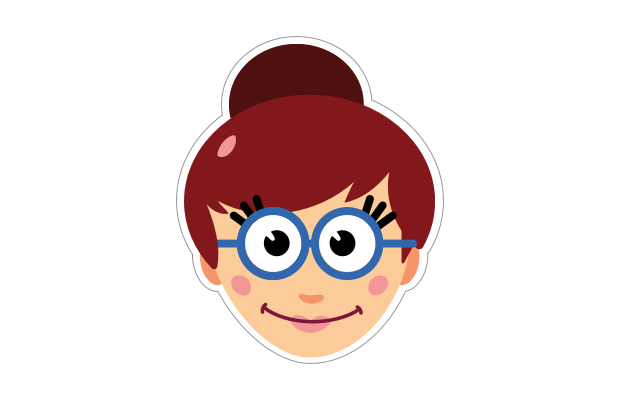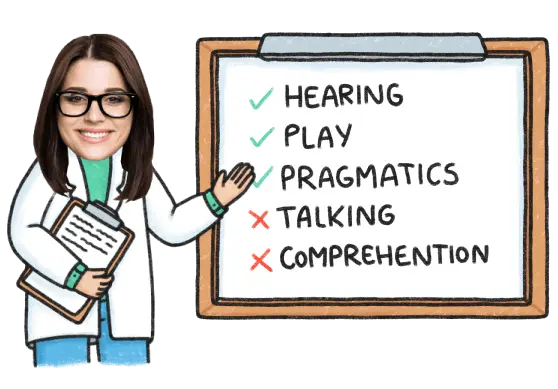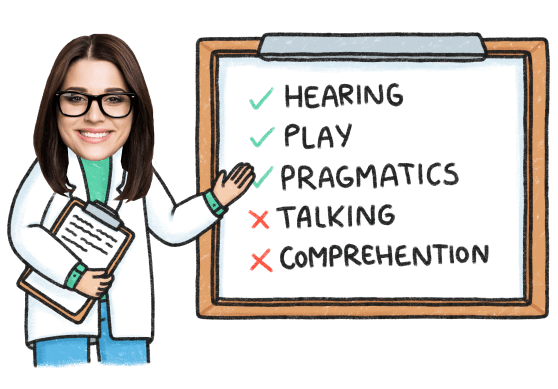3 Types of Phonological Processes and Disorders
Jan 17, 2022 I previously wrote a blog about Articulation Disorders and Therapy, and while writing that blog, I thought it would also be beneficial to touch on Phonological Disorders/Processes.
In This Article
After receiving articulation therapy, is your child still very difficult to understand? Does their speech sound like mumbling or disjointed? If so, your child may be struggling with another speech disorder related to phonological processes.
This blog discusses the definition of phonological processes and provides a basic overview of the different types of errors that can occur. As always, I encourage anyone reading this who suspects their child or a child they know might be struggling with this speech disorder to check out Speech Blubs 2 as a supplement to your speech practice and to contact a speech-language pathologist in your area for an evaluation.
Definition and Explanation of Phonological Processes
Typically, there are speech patterns that developing children use when they are learning speech sounds. Young children form these patterns because they do not yet have the skills to produce the words accurately and clearly.
For example, you may hear children say the word, “plane,” but it comes out at “pane.” They may also delete sounds in the word, such as “nana” for “banana.” There are many different patterns that can occur in a child’s speech, which is “normal” while their language develops.
A phonological disorder occurs when the patterns the child uses exist beyond the period of time that “typical” children have stopped using them, or when the errors are even more different than expected. For example, a child with a phonological disorder uses the phonological process of “reduplication,” like saying “wawa” for “water” by the age of 4. We speech therapists would say that his/her speech shows a delay because that process typically ends in children by the age of 3.
Boost Your Child’s Speech Development!
Improve language & communication skills with fun learning!

We call it a disorder when a child shows the excessive use of atypical phonological pattern. This is because when they use multiple processes, they create speech that is unintelligible. As a result, if you have a young child who is not speaking clearly and no one can understand him/her, it’s important to make sure they receive an evaluation for a phonological disorder and have a clear treatment plan that will address their speech errors.
I’m going to give you an overview of the most COMMON processes, and what speech pathologists see most frequently. Just know that there are many more processes, but for the purpose of this blog, it’s not necessary for you to know!

Different Types of Phonological Processes
Type 1: Substitutions
Substitutions – These are speech errors where kids replace the correct sounds with different sounds, making the word unintelligible.
Backing is when kids replace sounds created in the back of the mouth with the sounds that should be produced in the front of the mouth. For example, kids might substitute the word /dog/ with the word /kog/. This is consistent with more severe phonological delays.
Fronting is the exact opposite of backing. This is when sounds that should be created in the back of the mouth, are made in the front. For example, the child might say /toe/ for /go/. This process usually disappears in typical children by 3.5 years old.
Gliding is when kids substitute the /r/ sound with the /w/ sound, and the /l/ sound is replaced with a /w/ or /y/. For example, the child might say /yewow/ for /yellow/. This process is present in typically developing children until the age of 6-6.5.
Stopping is when a kid substitutes a sound like /f/, /s/, /ch/, or /j/ with sounds that are short and explosive, like /p/ or /d/. For example, a child might say /dip/ instead of /chip/ or /dish/ instead of /fish/. Kids should stop making these types of substitutions by the age of 5.
Vowelization is exactly what it sounds like; when a kid replaces a sound like /l/ with a vowel sound. For example, a child might say /papuh/ for /paper/.
Affrication is when a kid replaces a sound like /t/ or /d/ with the /ch/ or /j/ sound. An example of this process is saying /duice/ for /juice/. This process will disappear by the age of 3.
Deaffrication is when a kid replaces the /ch/ or /j/ sounds with sounds that they say more in the front of the mouth. For example, a child might say /ships/ for /chips/. The process will stop in children by the age of 4.
Labialization is when a child makes a sound that they shouldn’t make with the lips and makes it that way. For example, they may say /pie/ for /dye/ or /pip/ for /tip/.
Type 2: Assimilations
Assimilations are speech errors that kids make by taking a sound and replacing it with sounds that are similar or that they produce in the same way, but that isn’t the correct phoneme they should be using.
Reduplication occurs when kids produce sounds repeatedly during a word. For example, the child might say /baba/ instead of /bottle/. This will disappear by the age of 3.
Assimilation is when the child produces a sound that he or she already heard in the word. For example, they might say “dod” instead of “dog.” This process will eliminate itself by the age of 3.
Pre-vocalic Voicing is when a kid substitutes a voiced consonant with a voiceless consonant in the beginning of the word. You might hear the child say /pook/ instead of /book/. This will end by the age of 6.
Type 3: Syllable Structure
Syllable structure changes occur when a child takes a word and deletes, adds or modifies the word in some way that makes it incorrect.
Cluster reduction is when a child takes two sounds that they speak together and replaces them with another sound. For example, the word /tree/ may sound like /tee/.
Final consonant deletion is when the last sound of the word is left off. For example, the word /dog/ may sound like /do/. This process should stop by the age of 3.
Initial consonant deletion is when the first sound of the word is left off. The child may say the word /oor/ instead of /door/. In more severe cases of phonological disorders, kids typically delete the first consonant.
Again, there are many more types of speech errors, but as a speech pathologist for the last 10 years, these are the most common errors that I have seen. If you suspect your child might have a phonological or articulation disorder, please make an appointment for a screening or evaluation by a speech-language pathologist and check out Speech Blubs 2 for some fun speech therapy homework!
Have a question for our Speech Therapists?


Fronting – the term used when sounds that should be made in the back of the mouth (velar) are replaced with a sound made in the front of the mouth (alveolar)
Very helpful!.. ????
My daughter has speech therapy, but the therapist said she would expect more improvement by now. She deletes constants but has improved with end constants, changes f for s and changes t and k, while when saying a word she can be quite clear in a sentence she will drop sounds. I’m just not sure what else I can be doing. We have a list we practice every day, correct or ask her to self correct . It there something else I should be looking out for. Speech has been weekly for last 9 months.
Hi, for more at-home practice try Speech Blubs app, it is a great tool and kids love it! Try to incorporate your speech practice in every aspect of your life — you can even turn household activities into a speech activity! The more frequent your child is exposed to certain skills, means the more skill learning carryover, which is the goal of therapy!
My daughter has a phonological processing disorder. She just turned 4 a few weeks ago. She deletes beginning, middle, and end sounds. Sometimes she will only say one of the three. She says very few consonants. She is capable of making all the letter sounds, and will repeat back any sound you ask for, but doesn’t use them in conversation. She has an IEP and was getting speech therapy 5 days a week, pre-Covid. She only had a few virtual sessions from March-September, and is now up to 3 virtual sessions per week. Her vocabulary is very large, but I am the only one who understands most of what she says. She has hit every other developmental milestone on time. Would she benefit from this app?
Hi Amanda! I would say, yes, she would benefit from Speech Blubs. Sometimes virtual speech sessions can be quite boring for little kids. Not saying that the therapist is boring, but there’s a big difference between in-person and virtual therapy. The app will target all speech sounds (you can select the ones you want to work on to meet her needs) and in all positions of words. They have fun little games so that kids don’t feel like they are necessarily working on their speech sounds. I would recommend that while using the app, you sit with her and still engage her in the conversation! It will help her carry over the information that she is learning from the app to real-life situations.
Stacie Bennett, SLP
hi,could you provide some worksheets or come visual cards for speech sound disordes
Hi, we have an app that can help you practice your sounds! Head over to our Articulation Category, where you can find activities for specific sounds. I hope that helps!